The island of Čiovo lies in Middle Dalmatia and is connected to land with a draw bridge. The bridge between land and the island is situated next to the historical town of Trogir. Čiovo is a hilly island with the highest peak called Rudine. The villages of Arbanija, Slatine, Okrug Gornji and Okrug Donji are ideal places for a quiet holiday. There are beautiful pebbled and rocky beaches on the island. History lovers can visit several historical monuments such as the Convent of St. Cross and the Church of Lady of Prizidice. On the island of Čiovo you will find peace and quiet away from city hustle and bustle. Okrug Gornji is located on Ciovo, a central Dalmatian island, which is connected to Trogir by a drawbridge. Inhabited since prehistoric times, the island is home to a rich cultural heritage, while its beaches are encompassed by crystal clear sea, making it an attractive destination for many tourists.
Excursions
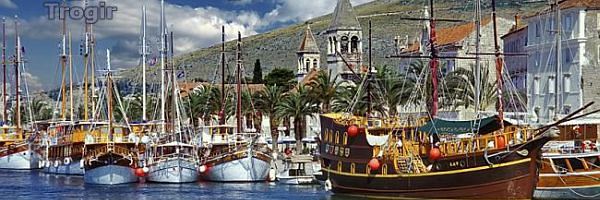
 |
Trogir is situated on a small island in between the mainland and the larger island of Čiovo. Except for green parks, the entire island is occupied by stone-houses, palaces, churches, monasteries, towers and old city walls. Dominating the town is the 13th century Cathedral of St. Lawrence. |
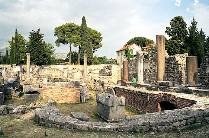 |
Solin is the ancient Roman settlement of Salona. Archaeologists have excavated remains of tempels, amphitheatres, early Christian churches, burial grounds and baths. Solin is the most important excavation sight from the Roman times in Croatia. |
 |
Split is located on a small peninsula of southern Croatia on the eastern shores of the Adriatic Sea. The region enjoys a Mediterranean climate and is one of the sunniest places in Europe. The largest and most important city in Dalmatia, Split has many attractions but is probably best known for the many historical landmarks that can be found in and around the walls of Diocletian's Palace. Split has numerous museums, old churches and other archeological sites which make it an important cultural attraction. |
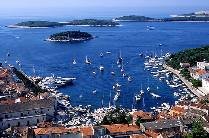 |
Hvar is the longest of all Croatian islands and is home of three towns. The largest of these, also named Hvar, served as an important harbor for Venice's Adriatic fleet from the late 12th century through most of 18th century. The Arsenal, an imposing building built in 1611 was the site of Europe's oldest community theatre. |
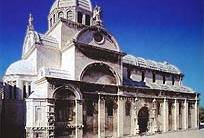 |
Šibenik was founded by Croats more than a thousand years ago with first records dating from 1066. Sibenik is surrounded by its ancient fortress walls and is home to gothic - Renaissance Cathedral of St. Jacob, is one of the finest Renaissance sacral monuments in Dalmatia. |
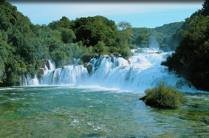 |
Krka National Park is one of 7 National Parks in Croatia. Running through the park is The Krka River, which is a distinctive phenomenon due to its formation of travertine barriers. The unusual formation help to create the famous Krka River Waterfalls. The whole area is rich with endemic species-vegetation as well as birds and fish. Area has been preserved in its original form. |
 |
Dubrovnik was founded in the 7th century. Town walls 2 km long, which were built in the period from 11th to the 17th century, surround it. Dubrovnik was the center of the Republic of Dubrovnik, which feel with the arrival of Napoleon at the beginning of the 19th century. The main street in Dubrovnik, Stradun, is unique in its beauty. With its 17 monasteries and churches and one of the oldest synagogues in Europe, represents a heritage monument and is protected by UNESCO. |
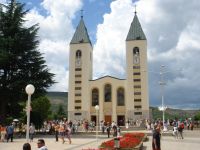 |
Pilgrims and visitors from all over the world come in this sanctuary for the spiritual recovery in order to face in better ways the challenges they have to deal with in a real life. It is belived that Our Lady has contacted the 6 people from Međugorje and carried over the messages about love, peace and prayer to all the population. There is something special about this place and evry visitor can feel a special peace when they come here. |















 The entire Old Trogir city core is under protection of UNESCO world heritage. Trogir monuments, buildings and works of Art are selected (in 1997.) between very few cities in the World to represent world's culture and art treasure.
The entire Old Trogir city core is under protection of UNESCO world heritage. Trogir monuments, buildings and works of Art are selected (in 1997.) between very few cities in the World to represent world's culture and art treasure. The relief of Kairos, the Greek god of the happy moment, probably from the 1st century B.C., is kept in the Benedictine nunnery with the church of St. Nikola. Discovered in Spring 1928 in a abandoned house of the Stanosevic family. The Greek inscription from the 4th - 3rd century B.C., the oldest written monument in the area of Trogir, is also built in the wall of the cloister of this nunnery.
The relief of Kairos, the Greek god of the happy moment, probably from the 1st century B.C., is kept in the Benedictine nunnery with the church of St. Nikola. Discovered in Spring 1928 in a abandoned house of the Stanosevic family. The Greek inscription from the 4th - 3rd century B.C., the oldest written monument in the area of Trogir, is also built in the wall of the cloister of this nunnery. 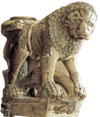 Portal of Master Radovan, the entrance to the St. Lawrence Cathedral (finished 1240), is monumental and unique piece of art of Dalmatian Middle-age plastic, one of the most important monuments of Croatian history. The bell-tower of Cathedral of St. Lawrence is the tallest and most distinctive building in the Trogir area. It is a 47m high tower built in 3 different styles during almost four centuries.
Portal of Master Radovan, the entrance to the St. Lawrence Cathedral (finished 1240), is monumental and unique piece of art of Dalmatian Middle-age plastic, one of the most important monuments of Croatian history. The bell-tower of Cathedral of St. Lawrence is the tallest and most distinctive building in the Trogir area. It is a 47m high tower built in 3 different styles during almost four centuries.